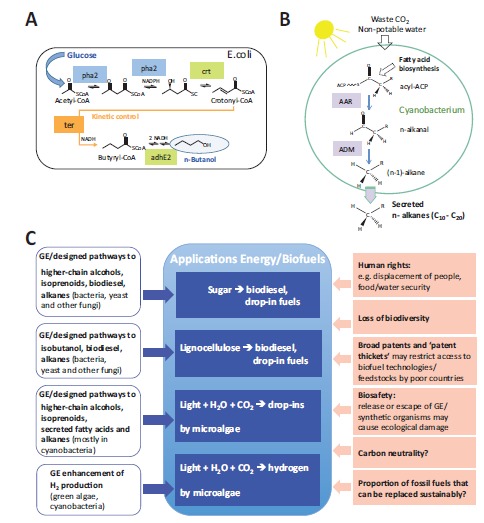Fig. (4).

Approaches involving synthetic biology concepts to generate biofuels. A. A synthetic pathway for high-level production of n-butanol from glucose in E. coli involving six enzymatic reaction steps based on genes from different organisms [14]. It includes the generation of an enzymatic reaction mechanism (rather than a physical one) as a kinetic control element to achieve high yields (shown in orange). phaA acetoacetyl- CoA thiolase/synthase; phaB, 3-hydroxybutyryl-CoA dehydrogenase; crt, crotonase; ter, trans-enoyl-CoA reductase; adhE2 bifunctional butyraldehyde and butanol dehydrogenase. The origin of genes is indicated by color: blue, R. eutropha; green, C. acetobutylicum; orange, T. denticola. B. Generation of cyanobacteria for direct photosynthetic production and secretion of hydrocarbon fuels (n-alkanes) involving waste CO2 and non-potable water [17-86] The introduction of as few as two heterologous genes, encoding acyl-ACP reductase (AAR) and alkanal decarboxylative mono-oxygenase (ADM) activities, from other cyanobacterial species can confer, or enhance, n-alkane (C10- C20) synthesis (dependent on the host cell) and directs product secretion for easy recovery without the need to extract cells [86]. C. Overview of approaches related to synthetic biology (open blue boxes) and of their potential applications/assets (filled blue boxes) and challenges/risks (filled red boxes) in the production of biofuels. GE, genetically engineered.
